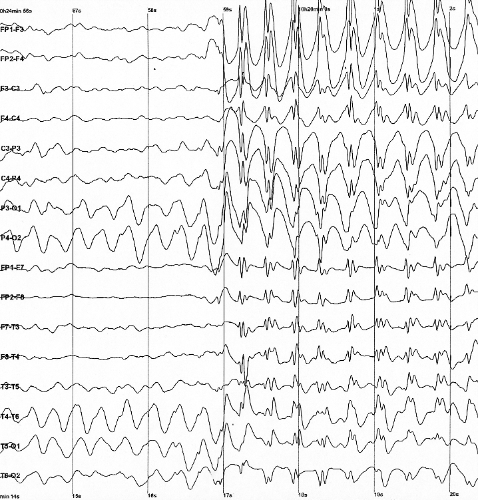New molecule prevents recurrent temporal lobe epilepsy in mice

Working in mice, researchers at Duke University have discovered a potential new class of drugs that may prevent the development of temporal lobe epilepsy, one of the most common and devastating forms of epilepsy.
Temporal lobe epilepsy is particularly debilitating because it strikes the areas of the brain responsible for memory and mood. As a result, patients have impaired awareness during their seizures. These individuals cannot drive a car because of the risks of harming themselves or others, and are limited in the career options they can pursue.
There are treatments available for people with temporal lobe epilepsy, including medications to help manage symptoms and, in rarer cases, surgical removal of the temporal lobe, where the seizures originate. But, as with many disorders that are intrinsic to the brain, no drugs are available to prevent temporal lobe epilepsy or slow its progression.
The new compound, reported in the Nov. 4 issue of Neuron, may change that. More animal studies would be needed to move this drug toward human clinical trials, but "what we hope is that we could use this drug to intervene in patients who have had an episode of prolonged seizures and give it to them briefly following that episode to protect them from becoming epileptic," said James McNamara, M.D., a professor in the departments of neurobiology and neurology at Duke University.
At least some cases of temporal lobe epilepsy are thought to start after a single episode of prolonged seizures that occurs early in life in response to any number of events, like a high fever. Clinical observations in humans and experiments using animal models of seizures support this notion.
Research also has shown that a brain receptor called TrkB is overactive after an episode of prolonged seizures and could be responsible for turning the one-time event into a chronic disorder. In a 2013 study published in Neuron, McNamara's group showed this definitively by using a chemical-genetic approach to block TrkB signaling in a mouse briefly following an episode of prolonged seizures. The inhibition prevented later development of epilepsy.
However, TrkB was less-than-optimal as a drug target because its activation has both desirable and undesirable consequences. One benefit of its activation is that it protects neurons from dying following seizures.
Indeed, in the new study, McNamara's group found that global inhibition of TrkB signaling following seizures boosted the number of dead neurons in the brain. The TrkB receptor is known to activate several signaling pathways within cells, so McNamara and his colleagues wondered whether distinct pathways downstream from TrkB might control its desirable and undesirable effects.
"We reasoned that perhaps we could disentangle the signaling pathways that produced the desirable consequences from the undesirable consequences," McNamara said. "And, if so, perhaps we could develop a drug that selectively inhibited the pathway producing the undesirable effects."
The cause of the subsequent seizures appeared to be phospholipase C(gamma)1, an enzyme spurred into action by TrkB activation. The scientists found that transgenic mice in which phospholipase Cγ1 was unlinked from the TrkB receptor were less susceptible to seizures than normal mice.
McNamara's team then developed a small-protein drug, called pY816, to prevent TrkB coupling with phospholipase Cγ1. The drug worked in neurons incubating in a dish to prevent activation of phospholipase Cγ1 via TrkB. Then, when they infused it into the blood of the mice, pY816 reduced by half the amount of activated phospholipase Cγ1 in the brain.
Most importantly, giving pY816 to mice for just three days following an episode of prolonged seizures reduced both the likelihood and severity of epilepsy many weeks later. The scientists confirmed that the drug was inhibiting activation of phospholipase Cγ1 in the mice.
Now the team hopes to take the steps to move pY816 to the clinic. They're also investigating how TrkB and phospholipase Cγ1 transform a brain from normal to epileptic.
"The question is, how does the activation of this signaling pathway modify the function of cells and circuits in the brain to produce epilepsy?" McNamara said.
More information: "A Peptide Uncoupling BDNF Receptor TrkB from Phospholipase Cγ1 Prevents Epilepsy," Bin Gu, Yang Zhong Huang, Xiao-Ping He, Rasesh B. Joshi, Wonjo Jang, and James O. McNamara. Neuron, November 4, 2015.

















